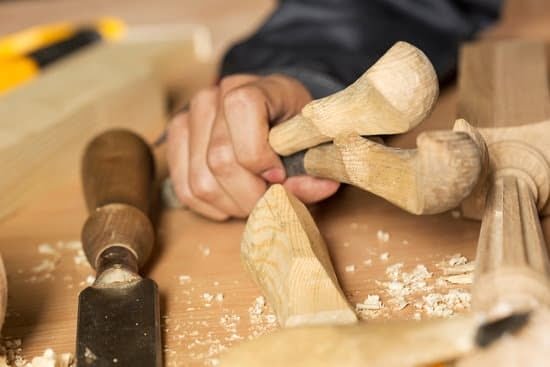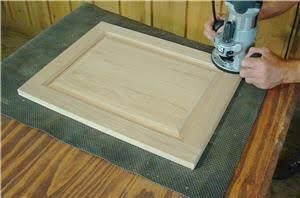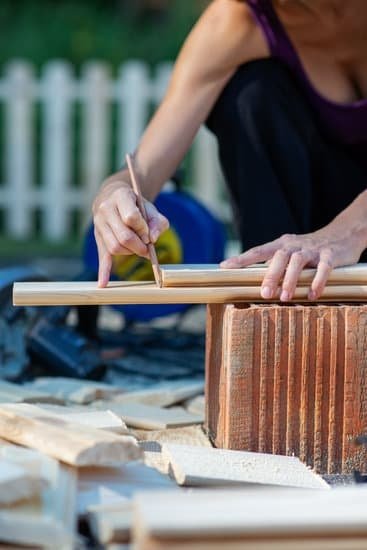Introduction
Cabinet woodworking tools are essential for any aspiring carpenter, or even just a hobbyist. They can be used to build shelves and furniture, and in many cases highly decorative pieces such as cabinets. Many tools will come into play when working on these kinds of projects. The most important tools include: planers, saws, chisels, routers, drill bits, clamps, and sandpaper. Understanding how each of them functions is key to using them well and creating the most beautiful and well-designed cabinets possible.
Planers are used to make sure that the surface of your stock is level prior to working it with other tools. This helps ensure that the final product looks professionally crafted instead of haphazardly put together. Saws are needed in order to cut the wood into various shapes; although a jigsaw might suffice for some projects, experts recommend investing in quality hand saws for precise cuts. Chisels permit you to carve fine details like mortises and rabbets into your wood pieces so they fit together perfectly later down the line. Routers can add intricate profiles onto parts if desired as well as bevel or round off edges for a refinement look or function. Drill bits will allow you to make pilot holes or bore out larger curves if necessary depending on your design needs. Finally clamps and sandpaper will help press parts together firmly until glues sets and smooth out edges for a professional finish respectively.
Essential Tools
For successful cabinetmaking work, both power tools and hand tools are necessary. Depending on the job, some tasks may be completed with just one or the other, but it’s safest to have both types at the ready. Some of the most important and essential cabinet woodworking tools include a circular saw, jigsaw, circular router, handheld router (aka: trim router), drill/driver and screwdriver combo, clamps for securing your project in place safely and securely, a miter saw for making precise cuts on miters and bevels along with measuring tapes, squares & levels for accurate measurements. When it comes to sanding you will need a random orbit sander as well as a sanding block or sandpaper for getting into those tight spots you can’t reach with a machine. You will also need specialty bits such as door-hanging bits or rabbeting bits to complete your projects correctly and efficiently. Once all is assembled you’ll need various cabinet cleaners & polishes to get your projects gleaming before applying a finish of your choice. With all these tools at hand there should never be any doubt that you’re prepared enough to tackle any cabinet woodworking job that comes your way!
Safety Equipment
Safety equipment is an essential part of any woodworking project and must always be used when working with cabinet woodworking tools. Protective gear should include eye protection, like safety glasses or a face shield, and hearing protection in the form of earmuffs or earplugs. Personal protective clothing should also be worn such as gloves, long pants and sleeves, and sturdy shoes to protect from sawdust and other debris.
It is important to use the correct type of protective gear for each specific tool being used. For example, you will need different safety glasses when cutting metal than when cutting wood. Additionally, power tools require additional safety equipment such as a dust mask for sanding or other inhaled particles, a respirator for more hazardous materials such as paint solvents, or a fire retardant jacket when using open flames such as solders and torches.
Before starting on any project, it’s important to inspect all your safety equipment and ensure it is in proper working order. Understanding the operator’s manual for each tool will help ensure proper use of the necessary equipment and provides instructions on how to use the tool safely so that you can work efficiently without compromising your security. If unsure about anything related to safety precautions ” ask your mentor or supervisor. Taking the necessary steps to stay safe while using cabinet woodworking tools could save your life!
Types of Wood
Various types of woods are available for cabinet construction, each with their own unique properties. The most commonly used woods include softwoods like pine and cedar, hardwoods like maple and oak, and specialty woods such as mahogany and cherry. Softwoods are ideal for creating simple designs, while hardwood is better suited to complex builds. Specialty woods provide the highest levels of stiffness and durability but may be harder to obtain or more expensive than other options.
The type of wood you select depends on the characteristics you want your cabinet to possess. Softwoods are lightweight, inexpensive, and less durable than hardwoods; however, they are easier to work with due to their relatively low hardness. Hardwood will often provide greater stability when compared to softer choices. Specialty woods highlight specific characteristics that make them stand out”such as patterns or specific colors”but tend to be heavier and more expensive than their counterparts.
When selecting a type of wood for your project, consider what characteristics best suit the space where it will be used . This will help determine the best kind of wood for your needs and ensure that all components align with one another in regards to design elements. Furthermore, familiarizing yourself with the various tools required for working with different types of wood helps ensure a successful outcome for any plans created through cabinet woodworking tools
Tool Care and Maintenance
When it comes to taking care of your cabinet woodworking tools, regular maintenance is key. Here are some detailed instructions on how to properly and thoroughly maintain your tools.
Sharpening: Sharpening should be done as needed with a sharpening stone or file. Start by shaping the blade or chisel slowly with light strokes until a sharp edge is achieved. Clean the tool between strokes with a cloth slightly dampened with oil. Once the tool is sharp, use a fine leather strop for polishing.
Storing: Keep your woodworking tools in a ventilated drawer or cabinet in a dry environment out of direct sunlight. It’s also important to store clean tools separately from those that are still covered in sawdust.
Cleaning: After each use, remove all sawdust and debris from your woodworking tools using a soft brush or cloth. Wipe down blades and chisels with an oil-soaked rag to keep them lubricated, preventing them from rusting. Additionally, you can use vegetable-based oils such as flaxseed or walnut oil for replacing moisture after using water-based finishes on woods like teak that become brittle when dry.
Common Issues
Common issues that can arise when using cabinet woodworking tools can include incorrect measurements, splintering, chipping and sawing inaccurately. It is important to measure your material accurately before cutting; if not, it could cause the entire project to be wasted. Additionally, splintering of the wood can occur with rough cuts if the saw is too dull or if the wrong sized blade for the material being cut is being used. Chipping of the wood can also occur from inaccurate sawing techniques or from low quality blades that do not have sufficient strength. Furthermore, if an object is rushed when sawing it will end up being inaccurate, which might not fit in a certain space alloted for it.
To prevent these issues from occurring when using cabinet woodworking tools, you should always ensure that a steady hand is used while cutting and measuring materials. Quality blades should also be used as they are designed to provide precision cuts without splintering or chipping of the wood. Additionally, reading instructions thoroughly and double checking measurements before starting a project will help guarantee accurate and quality results every time.
Final Considerations
Ergonomics should be first and foremost on the list of key points to consider when selecting and using cabinet woodworking tools. Ergonomics is the science of designing tools to reduce fatigue, prevent injury, maximize comfort, and enhance workflow. This can include ensuring that tools are the correct size for user’s hand size and shape, having features like handles and knobs that allow for an ergonomic or balanced grip while providing adequate control, or tuning vibrational frequencies of power tools to reduce physical exhaustion. Additionally, it is important to select cabinet woodmaking tools that are made with high-quality materials to ensure durability and longevity. Additionally, users should also look taken into account operating costs such as electricity bills or fuel costs as part of their selection process. As with any investment in a tooling system, budget considerations play a significant role in tooling selection. Researching available options helps ensure users make informed decisions based on their specific applications and understand the Total Cost of Ownership (TCO) from purchase to the proper disposal of any worn-out parts, supplies or materials.

Hi everyone! I’m a woodworker and blogger, and this is my woodworking blog. In my blog, I share tips and tricks for woodworkers of all skill levels, as well as project ideas that you can try yourself.





